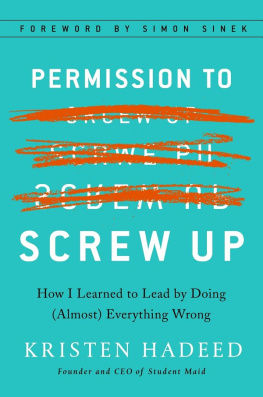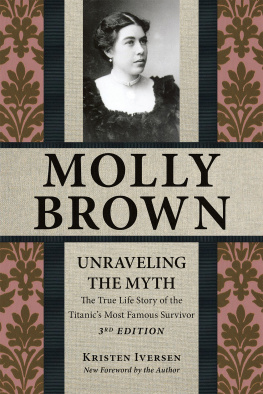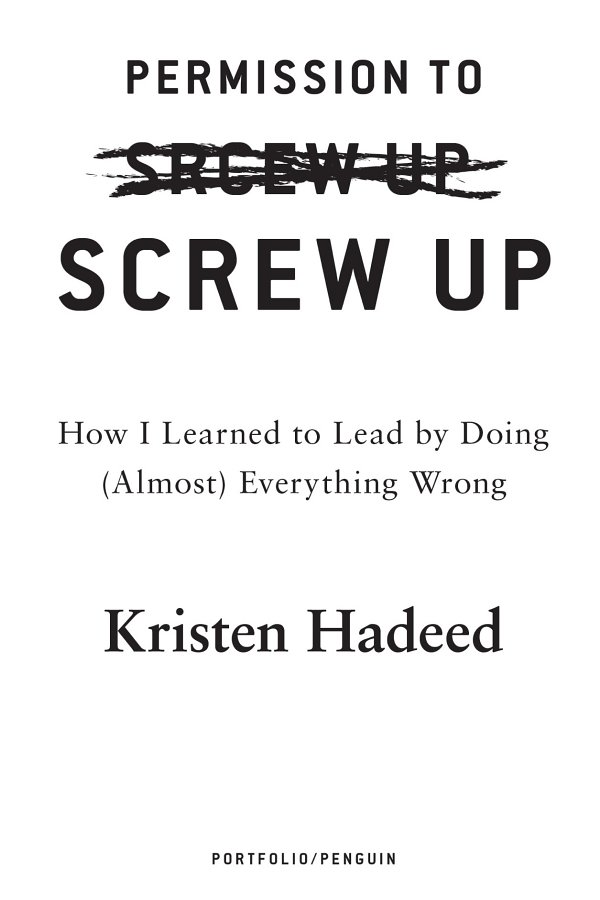Penguin supports copyright. Copyright fuels creativity, encourages diverse voices, promotes free speech, and creates a vibrant culture. Thank you for buying an authorized edition of this book and for complying with copyright laws by not reproducing, scanning, or distributing any part of it in any form without permission. You are supporting writers and allowing Penguin to continue to publish books for every reader.
Penguin is committed to publishing works of quality and integrity. In that spirit, we are proud to offer this book to our readers; however, the story, the experiences, and the words are the authors alone.
Some names and identifying characteristics have been changed to protect the privacy of the individuals involved.
My best friend, my rock, and my first business partner. Thanks for believing in me, for pushing me to stay true to who I am, and for always playing Ken so I could be Barbie. (Like you had a choice.)
FOREWORD
C hin up. Smile. Stand up straight.
This is the language of ballet, an art form that is all about projecting perfection. And that is exactly what the audience sees. The perfect line. The perfect form. The perfect movement. You know... perfect. A look behind the scenes, however, reveals something quite different. The reality of ballet is anything but perfect, and creating the illusion that it is comes at a steep cost. Aching bodies. Mangled toes. Eating disorders and body dysmorphia. And any career success that ballerinas may achieve doesnt last long. Most retire in their thirties because of injuries and wear and tear on their bodies. Perfection, as it turns out, is a short-term strategy. The same is true in business.
So many leaders think perfection is the key to high-quality performance and high-quality service. And that can work, I guess, but not for long. Pushing people to be perfect all the time, as in ballet, comes at a cost. In business that cost is performance, innovation, and stability. Leaders who push for perfection burn out their people. They cause employees to work against one another rather than support one another. They create toxic environments where people are more likely to blame others than take responsibility themselves, where they hoard ideas instead of sharing them, and where they hold tight to best practices instead of passing them on to other members of the team, whom they view as competition. In cultures that demand perfection, employees and leaders alike mask gaps in training, cover up mistakes, and suppress feelings of doubt or concern. This is not a recipe to build a strong organization.
Unfortunately, perfection has become the modern standard. In our personal lives, we feel pressure to curate and filter our pictures so that our lives look perfect before we share them on social media. And organizations are just as susceptible as individuals. Many companies go to great lengths to present themselves as infallible too. Every decision is always the right decision until scandal or public outrage forces executives to admit their direction was anything but right. Consider Volkswagen falsifying emissions for its cars or United Airlines dragging a paying customer off its aircraft. It took tremendous public pressure before the leaders of these companies admitted they had made a mistake.
Perfect is an aspiration. An ideal. An unachievable goal. People who present themselves as perfect and maintain that all their work or all their decisions are perfect are totally untrustworthy. Be it in a sales call or a job interview, the person who says with confidence, I am really good at this, but that is something I would want help with, is vastly more trustworthy and credible than someone who claims to be great at everything.
Perfection comes out of molds or off assembly lines. It is not the natural state of things. And the great irony is that we value things made by hand more than we do things that come from machines, despite the fact that things from machines are more... perfect. Why, then, do so many leaders fail to recognize the same value when it comes to their people or, for that matter, themselves? Our foibles are what make us endearing. Our irregularities are what make us unique. Our human imperfections are what make us beautiful. This doesnt mean that we shouldnt strive to be better. But there is a huge difference between aspiring to be our best selves and claiming to be perfect. One is a journey of fulfillment. The other is a lie we tell ourselves and others. Good leaders know that their people will only truly thrive not when they are pushed to be perfect but when they are encouraged to be their natural best.
And this is exactly why Kristen Hadeeds work matters. As she built her business, Kristen learned more than the value of screwing up. She learned the value of imperfection. She learned how to create a culture in which her people feel safe being imperfect. And to feel safe being imperfect means feeling safe being vulnerable. That, in huge measure, is what has propelled her companys success and helped her people become some of the most innovative, productive, trustworthy, and cooperative employees out there.
I admit, being vulnerable sounds more like advice from a self-help book than a good way to conduct business or build a company. That is, until we understand what vulnerable looks like in a company. It doesnt mean we walk around crying all the time. Vulnerable in a corporate culture means that someone feels safe enough to raise their hand and say, I dont feel qualified to do the job Ive been asked to do. I need help. It means someone feels they can admit weakness or insecurity without fear of humiliation and the company can, in turn, offer additional training. It means someone feels they can walk into their bosss office and say, I screwed up, without fear of putting their job, advancement, or reputation on the line. But for too many of us, vulnerable is exactly the thing we most certainly cannot be at work. Perfect (or the presentation of perfect) is our best option for security or advancement. Were it not for the fact that thats impossible, it could be a reasonably good strategy.
Creating a culture in which people feel safe to make mistakes, to reveal their weaknesses and imperfections, isnt easy, but it is what leadership is all about. Leadership is not about being in charge; its about taking care of those in our charge and making people feel safe.
Permission to Screw Up is the story of what it means to be a leader. What is so astonishing about Kristen is how young she was when she figured it out. Kristen is not perfect. She is not a tech billionaire. Her company is not a unicorn. Her success is not the stuff of folklore and fantasy, which has unfortunately become the standard of success for so many in her generation. Her story is more human. More achievable. Less about winning a lottery and more about the work we need to do to inspire respect, loyalty, and remarkable teamwork. Her story is a far more trustworthy guide for how we should be building companies than too many of the other books we read on the same subject.












